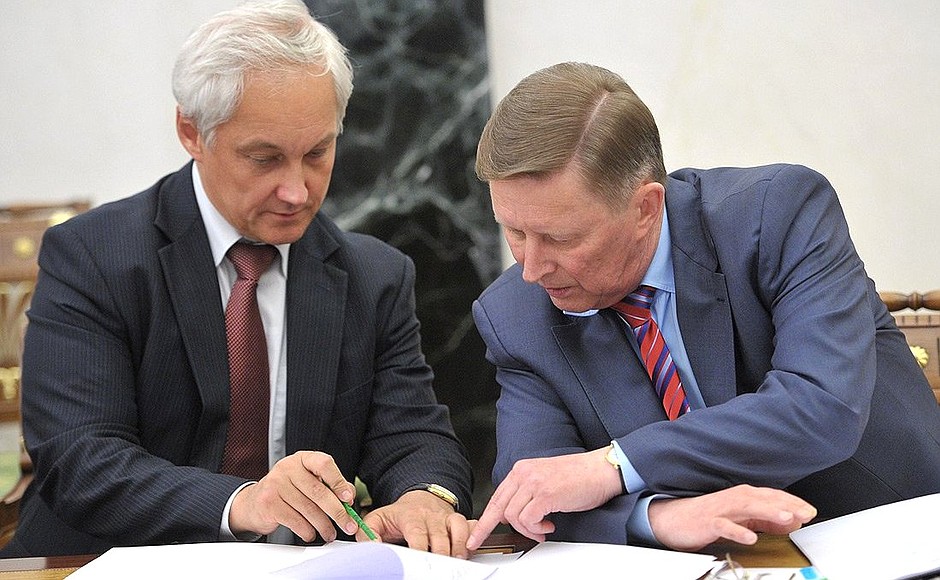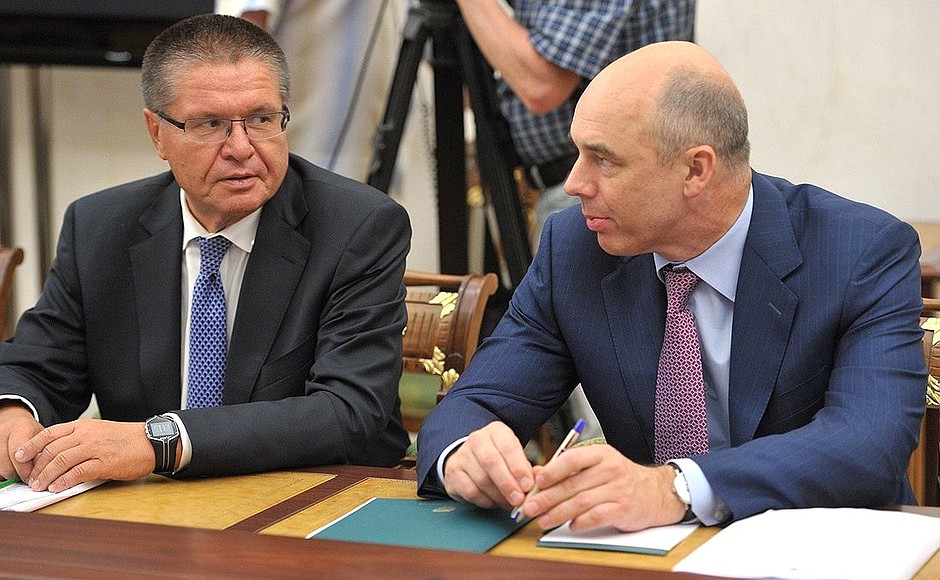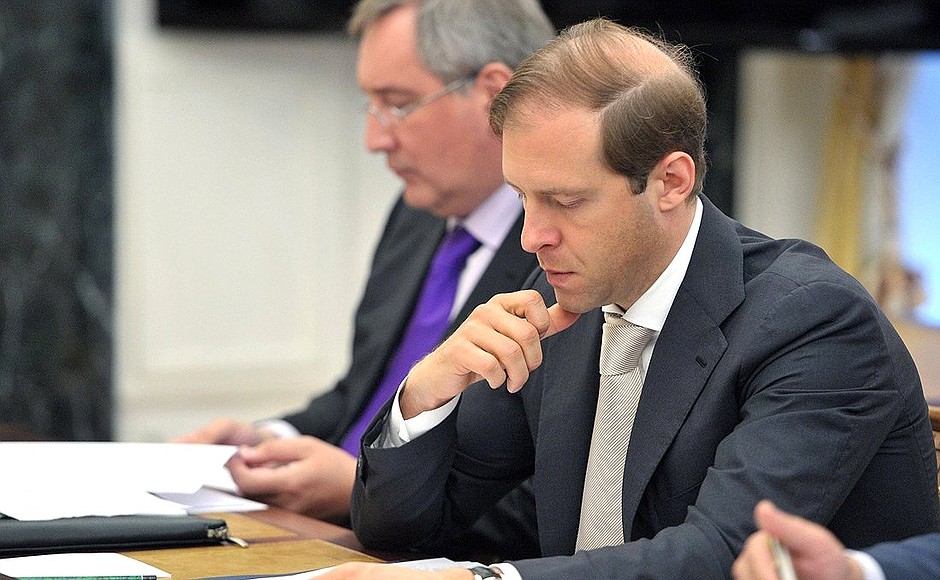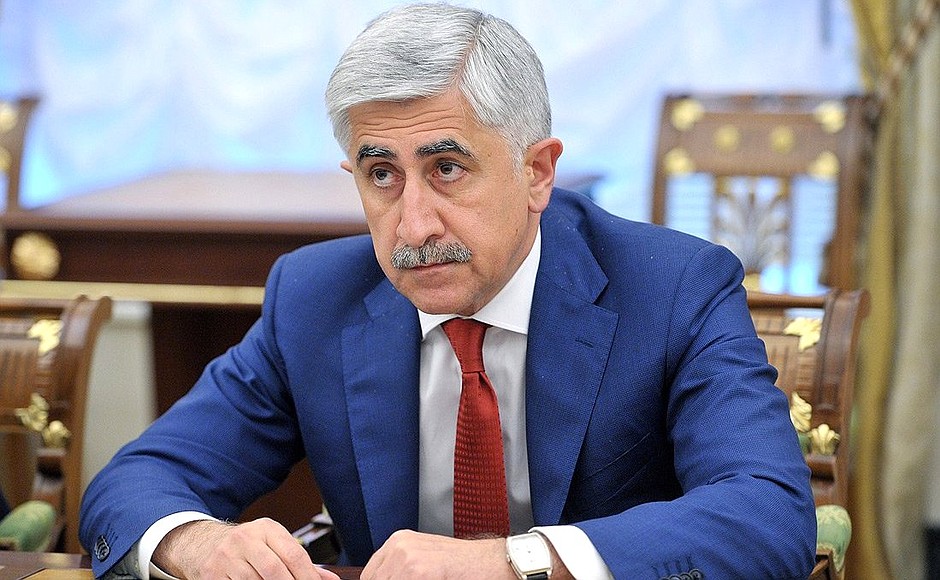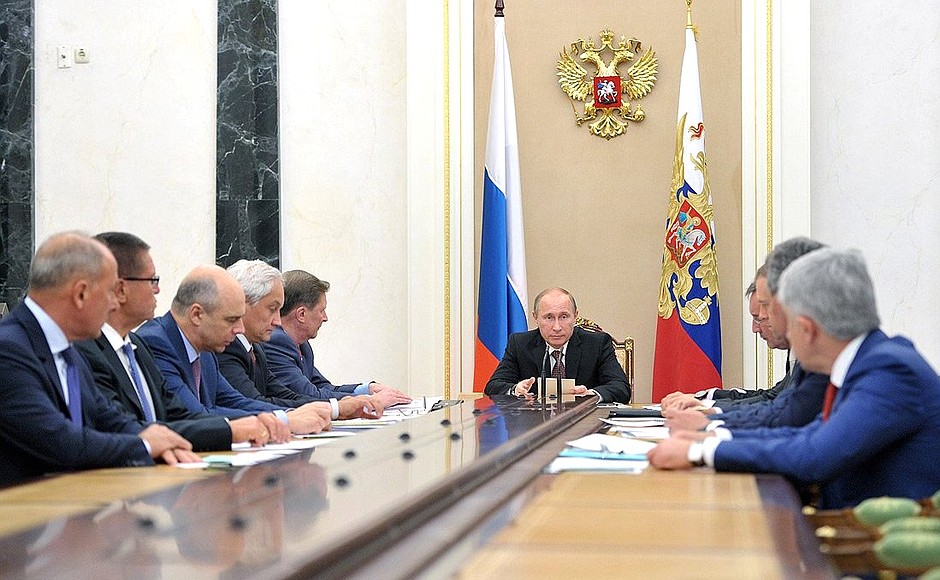The meeting participants discussed measures to develop civilian segment of Russia’s aircraft manufacturing sector, in particular, possible financial support mechanisms for producers and buyers of Russian-made civilian aircraft.
* * *
President of Russia Vladimir Putin: Good afternoon colleagues.
We discussed our development plans recently at the St Petersburg International Economic Forum. The top priorities are investing in infrastructure, raising labour productivity and effectiveness, reducing our dependence on raw materials exports by modernising industry throughout the non-raw materials sector, and developing and modernising key industrial sectors.
“The OAK’s establishment was a calculated and objectively necessary step, because we needed to consolidate the sector’s financial resources in order to compete, develop, and restore our positions.”
We are here today to analyse the situation in aircraft manufacturing and discuss the tasks facing the United Aircraft Corporation (OAK). The OAK’s establishment was a calculated and objectively necessary step, because we needed to consolidate the sector’s financial resources in order to compete, develop, and restore our positions. The sector was successful in the past, but as you know, we ended up falling behind in the modernisation process. I will address it in more detail later. We had to clearly establish exactly how and with what resources we would increase production of Russian-made high-tech goods and carry out our plans to re-equip the armed forces and modernise our civilian aviation fleet. These were the objectives we set out to address in establishing the OAK.
The ultimate goal is to develop one of the biggest global aircraft manufacturing centres here in Russia. We have the necessary base for this. Over the 7 years since its founding, more than 100 aircraft companies, design bureaus and related organisations have become part of the OAK, and a modern management system has been put into place, effectively for the entire sector. The company is growing and developing, obtaining positive financial results, and shows good production figures. A number of new generation models have been launched and put into series production. Production of aircraft has doubled since 2007.
Last year, 104 aircraft across the product range were built. The OAK’s overall orders portfolio now comes to more than 1 trillion rubles [$33 billion]. State defence procurement contracts are going ahead smoothly. The first T-50 PAK-FA aircraft has successfully completed its first test phase and everything is ready for putting the modernised Il-76, Il-476 transport plane into series production.
Of course, plenty of difficulties still remain. As I said, our aircraft manufacturing sector ended up missing out a whole modernisation cycle and in the 1990s lost a lot of its specialists and production facilities. Inevitably we still feel the impact today. We remember what state the sector was in. It was fragmented, and each segment had some seemingly decent companies or design bureaus, but individually they had no weight and absolutely could not compete on the global market. This is unsurprising, because sectors such aircraft manufacturing and shipbuilding, perhaps aircraft manufacturing above all, need state support. They need a comprehensive approach and big companies able to invest serious money in modernisation and research. And so, the effects of our past problems inevitably still make themselves felt today, above all in civilian aircraft manufacturing, where we have lost a lot of ground on the global market and on the domestic market too.
“The ultimate goal is to develop one of the biggest global aircraft manufacturing centres here in Russia. We have the necessary base for this.”
In this respect I want to bring several important points to your attention.
First, we have invested serious money in developing new model civilian aircraft such as the Sukhoi Superjet-100 over recent years. Production of this aircraft is steadily increasing. The MS-21 is another promising aircraft. The money that we invested in these projects, and continue to invest, is now bringing real returns and turning into real orders and contracts signed. The big task now is to increase sales, because a solid order book is the best guarantee of long-term sustained development in the sector.
I know that our aircraft manufacturers did well at the recent air show in France. Our aircraft demonstrated all their advantages and strongpoints. Big deals were signed for supplying civilian aircraft. To keep these deals running smoothly we are to ensure competent and modern work with customers, effective financial instruments, and support for deals of this sort. In this context, I think that we must put in place a systemic sales support mechanism for Russian aircraft, focused not on one-off deals, but on ongoing work with clients, whether domestic or foreign. I propose that we analyse this matter today and draft some concrete proposals at the end.
Second, the aircraft manufacturing cycle is quite a long one, and we thus have to ensure that the industry has a solid reserve of financial support and operates in such a way as to avoid excessive debt burdens and financial shortages. I ask the Government to draft the relevant measures and present its proposals on this matter.
Finally, we all know that an aircraft’s cost, technical features, and the contract’s financial terms all play a decisive part on the global market. But we should not overlook the very important question of providing quality after-sales service, reliable supply of spare parts, and organising modern pilot training centres. It is very important that Russian-made planes, no matter where around the world they are in operation, always get the timely service support they require. I ask the corporation management to give this area of work their utmost attention. We will talk about this area too, today. Let’s start work.
<…>
